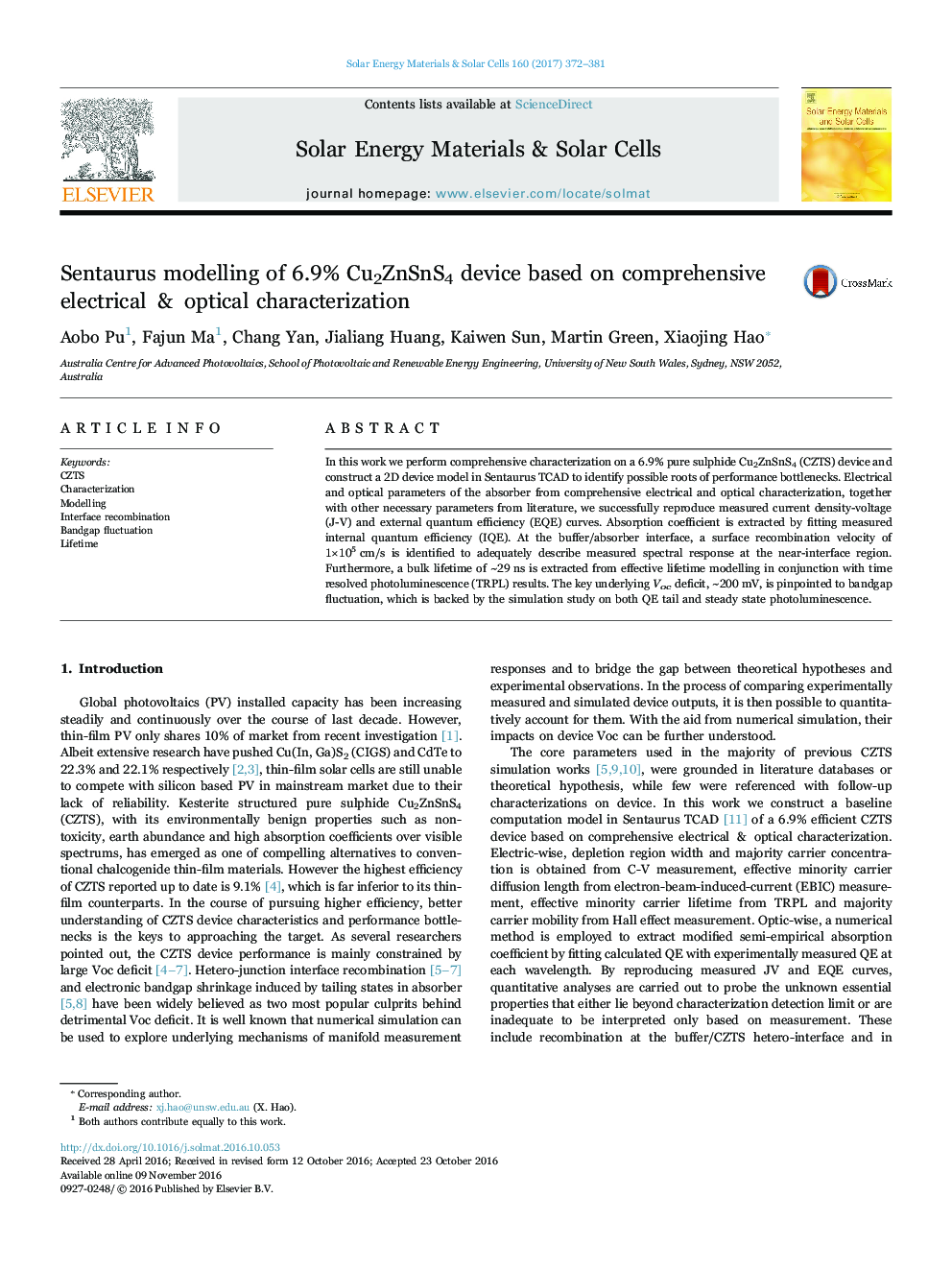| Article ID | Journal | Published Year | Pages | File Type |
|---|---|---|---|---|
| 6457367 | Solar Energy Materials and Solar Cells | 2017 | 10 Pages |
â¢Interface recombination was investigated through tuning interface recombination velocity in device model so that a fraction of simulated QEs, related to photons absorbed in near-interface regions, match that of measured QEs. This method yielded an interface velocity of 105 cm/s in turn suggesting the existence of defect-populated hetero-interface in CZTS device.â¢Effective lifetime of device model was calculated with various interface recombination velocities and bulk lifetimes at Voc bias. By matching the mean lifetime determined from TRPL, we found a bulk lifetime of 28.8 ns.â¢Gaussian-distributed bandgap model was used to numerically analyse the disorder-induced tailing states in CZTS absorber through fitting of QE tail and RTPL spectra. Bandgap-fluctuation amplitude of 120 meV was obtained. This, when projected into uniform 2D device, equivalents to a narrowed bandgap of 1.37 eV.â¢Our model forecasted that, with interface problem alone settled, the device Voc could be boosted to above 900 mV. Furthermore, device Voc could even reach up to 1 V when mitigation of these two problems comes to fruition.
In this work we perform comprehensive characterization on a 6.9% pure sulphide Cu2ZnSnS4 (CZTS) device and construct a 2D device model in Sentaurus TCAD to identify possible roots of performance bottlenecks. Electrical and optical parameters of the absorber from comprehensive electrical and optical characterization, together with other necessary parameters from literature, we successfully reproduce measured current density-voltage (J-V) and external quantum efficiency (EQE) curves. Absorption coefficient is extracted by fitting measured internal quantum efficiency (IQE). At the buffer/absorber interface, a surface recombination velocity of 1Ã105Â cm/s is identified to adequately describe measured spectral response at the near-interface region. Furthermore, a bulk lifetime of ~29Â ns is extracted from effective lifetime modelling in conjunction with time resolved photoluminescence (TRPL) results. The key underlying Voc deficit, ~200Â mV, is pinpointed to bandgap fluctuation, which is backed by the simulation study on both QE tail and steady state photoluminescence.
